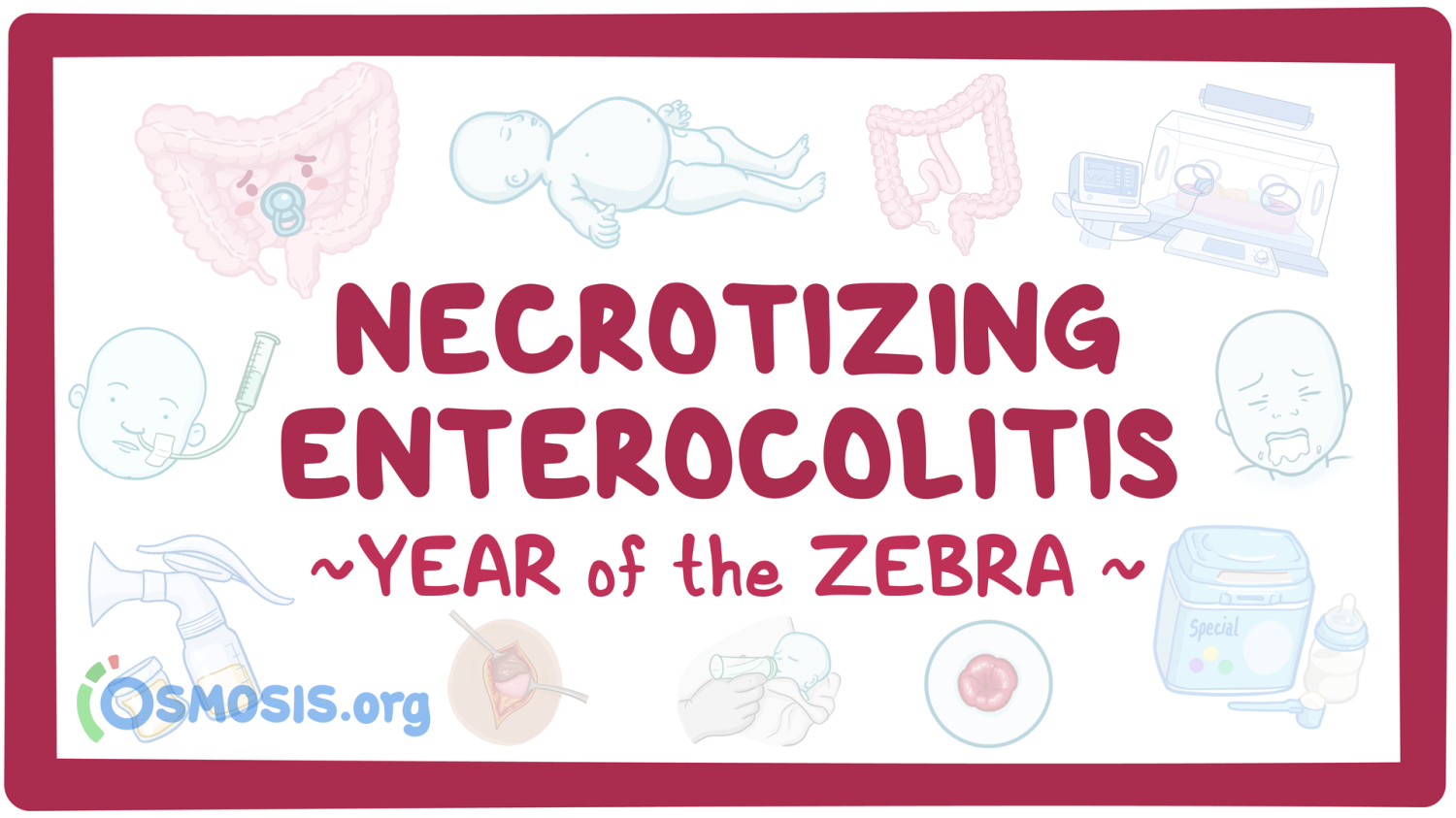
Rare Disease Education: Necrotizing Enterocolitis
Editor: Kelsey LaFayette, DNP, RN, FNP-C
"When you hear hoofbeats, think of horses, not zebras,” is a common saying in medical education that means you should think of common conditions first, instead of rare ones, in making a diagnosis. “Rare” is a relative term though and about 7,000 rare, or "zebra," conditions affect more than 350 million individuals worldwide. Although these conditions collectively affect an enormous number of people, each of these conditions individually is rare enough that it can be difficult to secure the resources to study them and to develop treatments and cures. Likewise, awareness of rare conditions may be low and health care professionals may not be familiar with their signs and symptoms making it more difficult to reach a correct diagnosis and provide effective treatments.
To increase knowledge about rare conditions, Osmosis and the National Organization for Rare Diseases (NORD) have collaborated on an initiative to bring education and awareness to the public. We are excited to be a part of this initiative because we believe everyone deserves quality health care, no matter how rare their condition.
Zebra Highlight: Necrotizing Enterocolitis
A newborn baby in the family is cause for celebration of new life and renewed hope for a better future. Yet, for one reason or another, a baby may be delivered prematurely, not fully ready for what lies beyond the womb. Invaders can overwhelm underdeveloped defenses and cause irreparable damage. That is the reality of this month's Zebra, necrotizing enterocolitis.
Necrotizing enterocolitis is a rare life-threatening condition that involves inflammation and necrosis, or tissue death, of the intestines. This could lead to severe infection and even perforation of the intestinal wall. Initial treatment is stopping any oral feeding and starting antibiotics. Without improvement, advanced surgery to remove diseases parts of the neonate’s intestine may be required.
Although we do not know the exact cause(s) yet, factors that increase risk include being born prematurely, feeding with formula instead of breast milk, and blocked or reduced blood flow to the intestines. Necrotizing enterocolitis affects 5 to 10% of premature infants born weighing less than 1500 g.
To learn more about the diagnosis and treatment of the necrotizing enterocolitis, watch the dedicated Osmosis video on YouTube and Osmosis.org
Meet Jack
Born at just 25 weeks weighing 900 g (1 lb 15 oz, 0.9 kg), Jack faced a perilous start to life, battling necrotizing enterocolitis. After life-saving surgery and over 4 months in the hospital, Jack has made incredible progress, thriving despite developmental delays and health challenges. Watch as his mother Jenny tells her emotional story and turns it into actionable impact to improve the lives of others.
Organization taking Strides
The NEC Society was founded in 2014 by Jennifer Canvasser following the devastating loss of her son, just before his first birthday, to complications from necrotizing enterocolitis. During his illness and passing she felt a lack of awareness and resources for parents navigating this disease. Jennifer leveraged her personal experience to create the NEC Society.
The organization has since become a leading voice in combating NEC, striving to improve the lives and support affected families through research and education.
On the education front, the NEC Society has worked tirelessly to educate healthcare professionals and the public. They offer a “resources box” ready for delivery to the parents of a newly diagnosed child. They host an accessible library of webinars and resources online on relevant educational topics related to NEC. They’ve also developed resources like the Neonatal Probiotics Toolkit to inform NICU clinicians and families about probiotics as a potential preventive measure for NEC.
On the psychosocial support front, they prioritize community building through support groups, mailing lists, and their “bereavement box” of resources in case of the worst.
On the research front, they are part of a biobank effort to collect as many samples as possible of feasible and aim to organize a registry of survivors or parents of children with necrotizing enterocolitis. That they can use it alongside the network of hospitals they work with to direct care the correct physician to care for them being.
To learn more about how you can be part of the solution, visit their website.
